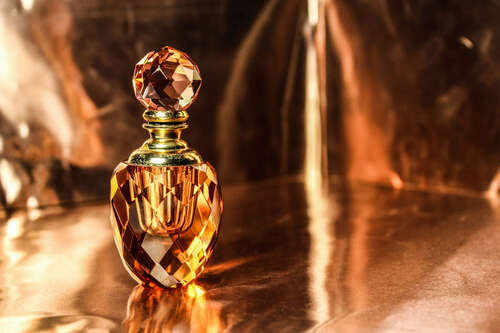
In a residential neighborhood east of San Francisco in Berkeley lies the Aftel Archive of Curious Scents, a tiny museum of smells. Opened in 2017, the archive is a multi-room cabinet of curiosities filled with odiferous artifacts old and new from around the globe. (Video tour below.)
The curator, Mandy After, is a respected artisan perfurmer and author of Essence and Alchemy: A Natural History of Perfume.
“About 60 percent of what’s in the museum had been in my studio,” she says. “Whenever I had visitors, I would always take things out and show them around. Everyone always seemed to be so surprised at what they saw and kind of loved it, which thrilled me. But then they’d leave, and I’d have all this stuff that I had to put away.”
From Smithsonian:
Along one wall, a taxidermy civet―a long-bodied and short-limbed cat-like creature—is paired with information detailing the animal’s role in ancient perfumery, including the forced secretion of its perineal glands, which produce a “fecal-floral” scent. Near another wall, a mid-19th-century tiger oak cabinet, with curved glass doors and glass sides, displays objects ranging from a 17th-century artisan pomander―a type of open metalwork ball made to hold aromatic spices and herbs as a protection against infection―to Victorian perfume buttons, each one fashioned with an interior cloth meant to absorb and hold fragrances. It’s a collection that’s been 30 or so years in the making, with Aftel acquiring centuries-old tomes brimming with perfume recipes from antique book fairs and rare book dealers, buying stashes of oils from long-time perfumers, purchasing some items online from reputable sellers and even receiving donations[…]
A couple hundred of these essences make up the archive’s “perfume organ,” a five-row display that’s similar in style to the keyboard instrument it’s named for. There are top notes, middle notes and base notes (the different layers of a larger scent), each of them arranged in alphabetical order. Some are familiar aromas like grapefruit and chamomile, while others are more obscure. Galangal, for instance, is a complex and tangy spice that smells like a mixture of cardamom, ginger and saffron; ancient Egyptians often burned it to disinfect the air.

